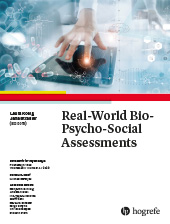The Real-Time Application of an Additional HRV Reduction Algorithm to Detect Negative Psychosocial States
Are We Ready yet?
Abstract
Abstract: Unobtrusively identifying adverse psychosocial states in everyday life would offer intriguing possibilities to trigger just-in-time adaptive interventions (JITAIs). Previously, we simulated algorithms to predict psychosocial states by means of cardiac data (so-called, additional, nonmetabolic heart rate variability reductions; AddHRVr). For the first time, this study implemented the AddHRVr algorithm in real-time mode to evaluate whether we could predict stress, perseverative cognition, or low-quality social interactions. We applied an ecological momentary assessment (EMA) in a sample of 36 participants for five consecutive days. The functioning of the AddHRVr algorithm did not translate into real-world application, and higher stress, perseverative cognition, or low-quality social interactions following the AddHRVr trigger could not be confirmed. Further data simulations were conducted to evaluate the reasons for the algorithm’s malfunctioning. We provide recommendations for future studies and call for further research and technical refinements to better align simulation approaches with real-time applications.
References
(2015). Fitting linear mixed-effects models using lme4. Journal of Statistical Software, 67(1), 1–48. 10.18637/jss.v067.i01
(1974). Additional heart rate—An indicator of psychological activation. Aerospace Medicine, 45(11), 1219–1222.
(2001). Generalizability theory. Statistics for social science and public policy. Springer. http://www.loc.gov/catdir/enhancements/fy0816/2001032009-d.html. 10.1007/978-1-4757-3456-0
(2018). New methods to optimally detect episodes of non-metabolic heart rate variability reduction as an indicator of psychological stress in everyday life. International Journal of Psychophysiology, 131, 30–36. 10.1016/j.ijpsycho.2017.10.007
(2020). Assessing new methods to optimally detect episodes of non-metabolic heart rate variability reduction as an indicator of psychological stress in everyday life: A thorough evaluation of six methods. Frontiers in Neuroscience, 14,
Article 564123 . 10.3389/fnins.2020.564123(1990). Inferring psychological significance from physiological signals. The American Psychologist, 45(1), 16–28. 10.1037/0003-066x.45.1.16
(2012). Acute psychosocial stress: Does the emotional stress response correspond with physiological responses? Psychoneuroendocrinology, 37(8), 1111–1134. 10.1016/j.psyneuen.2011.12.010
(2022). Just-in-time adaptive interventions for suicide prevention: Promise, challenges, and future directions. Psychiatry, 85(4), 317–333. 10.1080/00332747.2022.2092828
(2012). Interactive multimodal ambulatory monitoring to investigate the association between physical activity and affect. Frontiers in Psychology, 3,
Article 596 . 10.3389/fpsyg.2012.00596(2018). Stress and heart rate variability: A meta-analysis and review of the literature. Psychiatry Investigation, 15(3), 235–245. 10.30773/pi.2017.08.17
(2023). Resting HRV as a trait marker of rumination in healthy individuals? A large cross-sectional analysis. Authorea. Advance online publication. 10.22541/au.167156295.58669034/v1
(2022). ’Doctor, I am so stressed out!’ A descriptive study of biological, psychological, and socioemotional markers of stress in individuals who self-identify as being ‘very stressed out’ or ‘zen. Neurobiology of Stress, 18,
Article 100454 . 10.1016/j.ynstr.2022.100454(2020). Standardized massage interventions as protocols for the induction of psychophysiological relaxation in the laboratory: A block randomized, controlled trial. Scientific Reports, 10(1),
Article 14774 . 10.1038/s41598-020-71173-w(2004). Heart and emotion: Ambulatory monitoring studies in everyday life (1st ed.). Hogrefe Publishing. https://ebookcentral.proquest.com/lib/gbv/detail.action?docID = 5631116
(1996). Perception of emotions in everyday life: Studies with patients and normals. Biological Psychology, 42(1-2), 147–164. 10.1016/0301-0511(95)05152-X
(2018). Just-in-Time adaptive interventions (JITAIs) in mobile health: Key components and design principles for ongoing health behavior support. Annals of Behavioral Medicine, 52(6), 446–462. 10.1007/s12160-016-9830-8
(2018). Brain-heart interaction in perseverative cognition. Psychophysiology, 55(7),
Article e13082 . 10.1111/psyp.13082(2007). The polyvagal perspective. Biological Psychology, 74(2), 116–143. 10.1016/j.biopsycho.2006.06.009
(2023). R: A language and environment for statistical computing. R Foundation for Statistical Computing. http://www.R-project.org/
(2022). Feelings from the heart part II: Simulation and validation of static and dynamic HRV decrease-trigger algorithms to detect stress in firefighters. Sensors, 22(8),
Article 2925 . 10.3390/s22082925(2023). Supplemental materials to “The real-time application of an addition-al HRV reduction algorithm to detect negative psychosocial states in real-time: Are we ready yet?”. https://osf.io/6mgbt/
(2014). The manifold effects of positive affect on heart rate variability in everyday life: Distinguishing within-person and between-person associations. Health Psychology, 33(9), 1065–1073. 10.1037/hea0000079
(2021). Feelings from the heart: Developing HRV decrease-trigger algorithms via multilevel hyperplane simulation to detect psychosocially meaningful episodes in everyday life. Psychophysiology, 58(11),
Article e13914 . 10.1111/psyp.13914(2020). Heart rate variability (HRV): From brain death to resonance breathing at 6 breaths per minute. Clinical Neurophysiology, 131(3), 676–693. 10.1016/j.clinph.2019.11.013
(2015). Heart rate variability during adolescent and adult social interactions: A meta-analysis. Biological Psychology, 105, 43–50. 10.1016/j.biopsycho.2014.12.012
(2012). Psychometrics. In M. R. MehlT. S. ConnerM. Csikszentmihalyi (Eds.), Handbook of research methods for studying daily life (pp. 302–320). Guilford Press.
(2022). Singing at 0.1 Hz as a Resonance frequency intervention to reduce cardiovascular stress reactivity? Frontiers in Psychiatry, 13,
Article 876344 . 10.3389/fpsyt.2022.876344(2022). Squeeze the beat: Enhancing cardiac vagal activity during resonance breathing via coherent pelvic floor recruitment. Psychophysiology, 59, e14129. 10.1111/psyp.14129
(2009). Claude Bernard and the heart-brain connection: Further elaboration of a model of neurovisceral integration. Neuroscience & Biobehavioral Reviews, 33(2), 81–88. 10.1016/j.neubiorev.2008.08.004
(2016). Prolonged non-metabolic heart rate variability reduction as a physiological marker of psychological stress in daily life. Annals of Behavioral Medicine, 50(5), 704–714. 10.1007/s12160-016-9795-7



